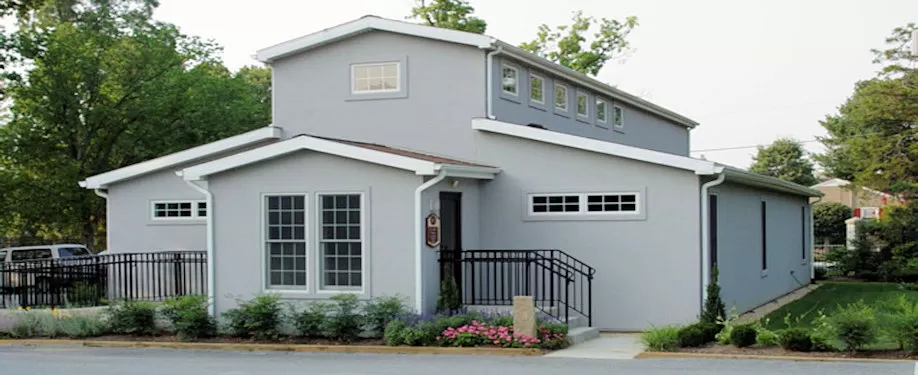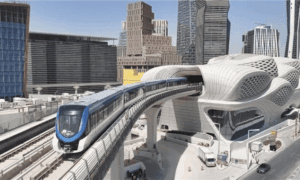Modular buildings have become a cost-effective and innovative alternative to traditional construction. Known for their adaptability, fast installation, and high-quality standards, they provide practical solutions across various sectors, including education, healthcare, and commercial enterprises.
One of the most common questions businesses ask is: How long do modular buildings last? A common misconception is that modular buildings are temporary structures with limited durability. However, at GCS Cabins, we’re here to explain why modular buildings are a long-term investment, offering decades of reliability and performance.
The Durability of Modular Buildings
Some people assume that modular buildings lack longevity, but this is far from the truth. Modern modular buildings are constructed using high-quality materials and precision manufacturing techniques, ensuring they are just as durable as traditional structures.
Built with steel-framed modules, modular buildings meet stringent building regulations and safety standards, making them strong, resilient, and long-lasting.
While lifespan depends on factors such as maintenance, usage, and environmental conditions, well-maintained steel-framed modular buildings can last around 60 years—comparable to traditional brick-and-mortar buildings.
Lifespan and Warranty Breakdown
To understand the longevity of modular buildings, let’s look at typical warranties and expected lifespans:
- Steel Structure Lifespan – A well-maintained steel-framed modular building can last around 60 years. Steel’s durability prevents common issues like warping or rot, ensuring long-term strength.
- Structural Warranty – Most modular manufacturers provide a 20-year warranty on structural components. At GCS Cabins, this includes steel columns, side runners, floor joists, and lattice roof beams. With proper maintenance, this warranty offers peace of mind and long-term security.
- External Warranty – Companies like GCS Cabins offer a five-year warranty on external finishes, covering elements such as wall panels and windows.
- Fixtures and Fittings Warranty – Internal components like doors, electrical outlets, and plumbing fixtures typically come with a 12-month warranty, ensuring quality and functionality from day one.
When properly maintained, modular buildings remain a valuable asset, offering businesses long-term usability and a strong return on investment.
Why Modular Buildings Are Built to Last
Factory-Controlled Construction
Unlike traditional buildings, modular structures are assembled in a controlled factory environment. This process ensures:
- No weather-related delays – Construction isn’t affected by rain, wind, or other external conditions, reducing the risk of damage.
- Precision engineering – Advanced manufacturing techniques guarantee consistent quality, eliminating weak points or structural inconsistencies.
- Protection from external elements – Factory-built modules are sealed, insulated, and structurally reinforced before installation, increasing their durability.
High-Quality Materials
Modular buildings are constructed from durable materials, including:
- Steel Framework – Provides superior strength and longevity.
- Insulated Wall Panels – Offer weather resistance and thermal efficiency.
- Energy-Efficient Windows – Reduce heat loss and improve insulation.
These materials contribute to the impressive 60-year lifespan of modular buildings while maintaining a high standard of quality and performance.
The Importance of Regular Maintenance
Like any structure, modular buildings require regular maintenance to ensure longevity. While they are designed for durability, certain elements—such as paint, insulation, and roofing—need occasional upkeep.
- Steel Framework – Regular inspections help prevent rust and structural wear, ensuring the building remains in excellent condition.
- Roofing & Cladding – Checking for leaks, corrosion, or minor repairs extends the building’s lifespan.
- Insulation & Seals – Keeping insulation intact improves energy efficiency and protects against moisture damage.
With proper care, modular buildings can meet or exceed their expected 60-year lifespan.
Portable Buildings: A More Flexible Alternative
If your business requires a shorter-term or more mobile space solution, portable buildings may be the right choice.
- Timber-framed portable buildings have a projected lifespan of around 30 years, making them ideal for temporary or semi-permanent applications.
- They are commonly used for on-site offices, classrooms, or temporary accommodations, where flexibility is a priority.
As with all structures, their longevity depends on proper maintenance, including regular inspections, minor repairs, and protection from harsh environmental conditions.
Sustainable & Cost-Effective Construction
One of the key benefits of modular buildings is their sustainability.
- Environmentally Friendly – Modular buildings generate less waste, as materials are reused and repurposed during the controlled factory process.
- Cost-Effective – The efficient off-site construction process reduces costs and minimises delays, making modular buildings an affordable alternative to traditional construction.
Because they require fewer materials, less energy, and minimal waste, modular buildings are an excellent long-term investment that benefits both your business and the environment.
Modular Buildings Grow With Your Business
One of the biggest advantages of modular buildings is their flexibility.
- Easily Expanded or Reconfigured – Need more space? Additional modules can be added, removed, or relocated as needed.
- Perfect for Growing Businesses – Modular structures evolve alongside your company, allowing for seamless expansion or layout changes.
Unlike traditional buildings, modular structures provide a dynamic, scalable solution that adapts to changing needs.
Maximising the Lifespan of Modular Buildings
While modular buildings are highly durable, certain factors can impact their lifespan:
- Heavy Usage – High-traffic environments (e.g., industrial sites) may experience faster wear and tear.
- Extreme Weather Conditions – Buildings in coastal or humid climates may require additional maintenance to prevent rust or moisture damage.
To prolong the life of your modular building, consider:
- Protective coatings – Helps prevent rust and corrosion.
- Additional insulation – Enhances energy efficiency and protects against weather damage.
- Preventative maintenance – Regular servicing reduces long-term repair costs.
Your modular building supplier should provide expert guidance on maintaining and extending the lifespan of your structure.
GCS Cabins: Your Trusted Modular Building Provider
Many industries have discovered the durability, sustainability, and cost-effectiveness of modular buildings. They provide an excellent long-term space solution for businesses, schools, healthcare facilities, and more.
For short-term or flexible space needs, portable buildings remain a great temporary option, lasting around 30 years.
At GCS Cabins, we have years of experience supplying and installing high-quality modular and portable buildings. Whether you need a permanent workspace or a temporary solution, we can help you find the perfect fit for your business.
Get in touch today to discover how modular buildings can benefit your business for years to come.
Read More From Techbullion



































